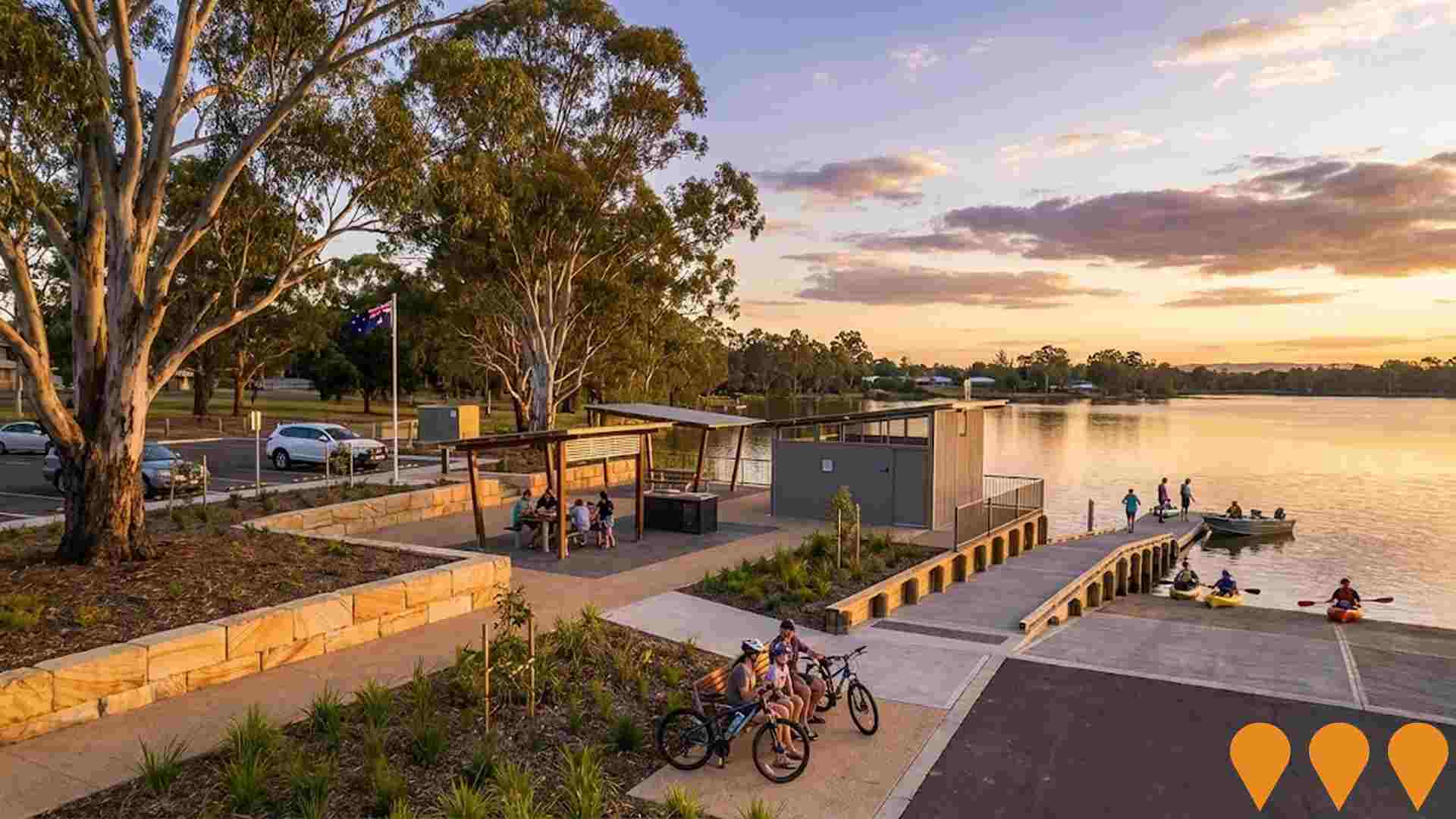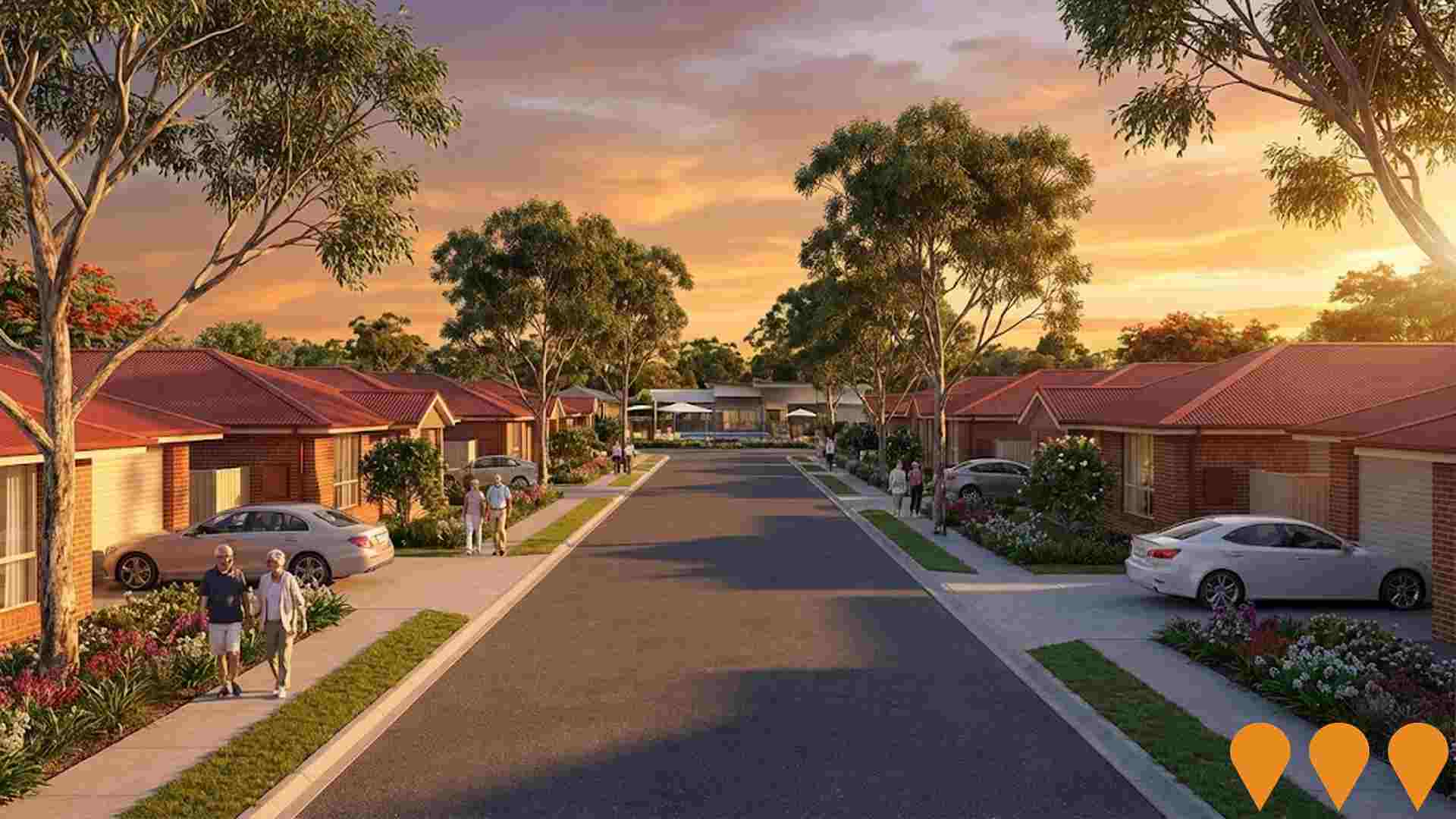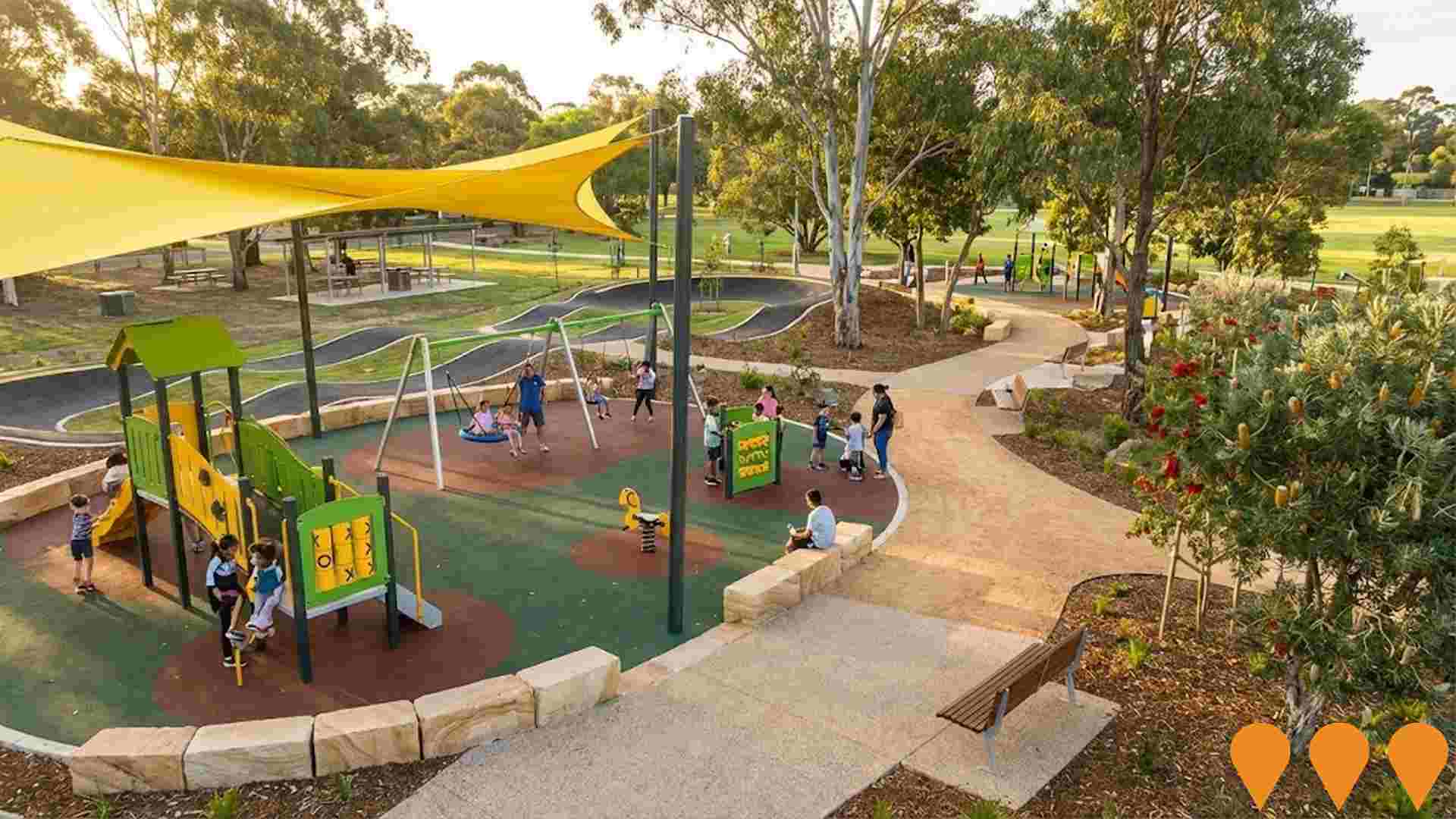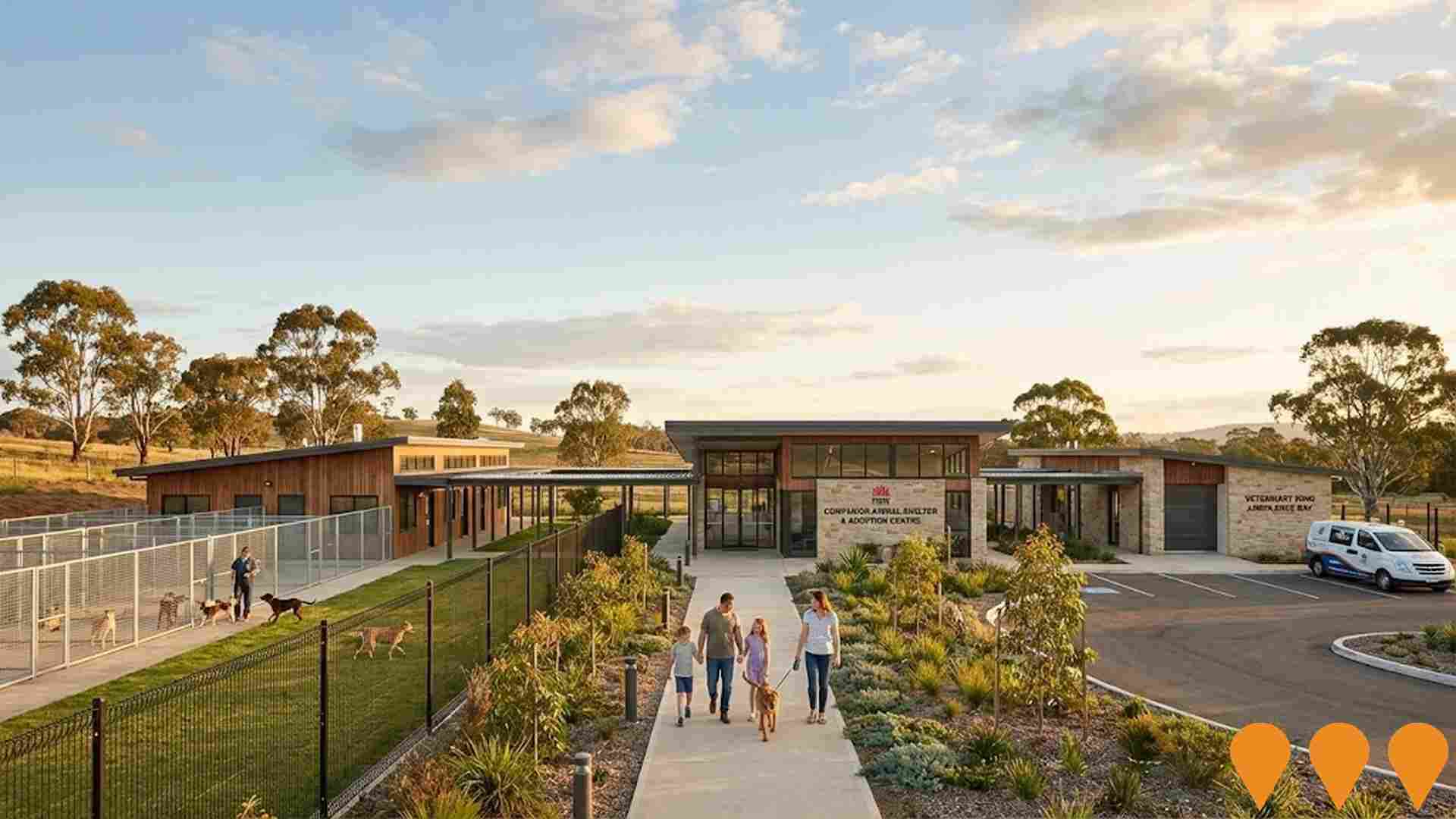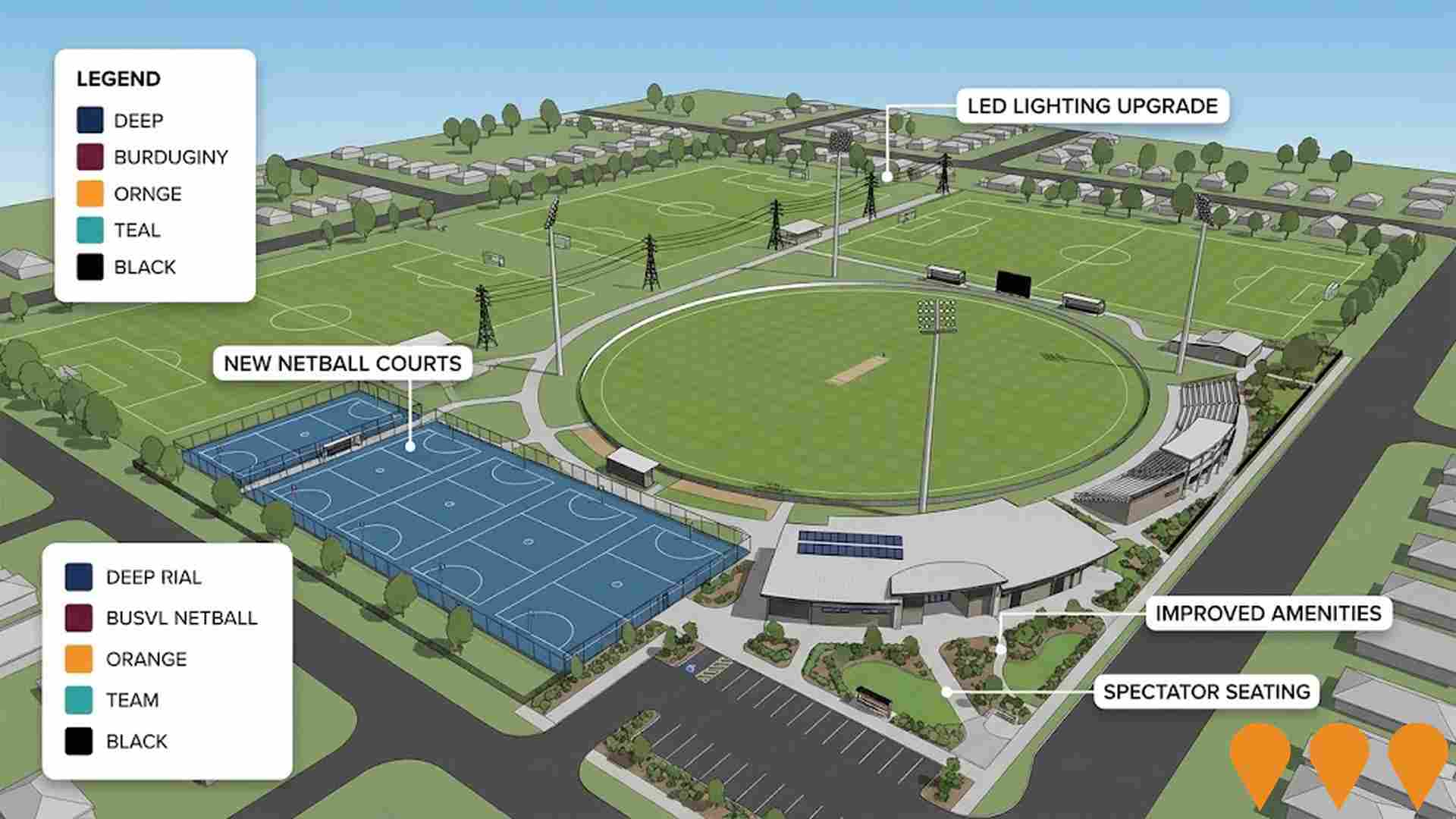Chart Color Schemes
est. as @ -- *
ABS ERP | -- people | --
2021 Census | -- people
Sales Activity
Curious about local property values? Filter the chart to assess the volume and appreciation (including resales) trends and regional comparisons, or scroll to the map below view this information at an individual property level.
Find a Recent Sale
Sales Detail
Population
An assessment of population growth drivers in Inverell reveals an overall ranking slightly below national averages considering recent, and medium term trends
Inverell's population was approximately 12,354 as of November 2025. This figure represents an increase of 297 people from the 2021 Census total of 12,057, indicating a growth rate of about 2.5%. The change is inferred from ABS estimates: Inverell's population was 12,279 in June 2024, with an additional 99 validated new addresses since the Census date. This results in a population density of approximately 59 persons per square kilometer. Over the past decade, Inverell has shown resilience with a compound annual growth rate of 0.4%, outperforming its SA3 area. Overseas migration contributed around 74.3% to recent population gains, although all factors including natural growth and interstate migration were positive.
AreaSearch uses ABS/Geoscience Australia projections for each SA2 area released in 2024 with a base year of 2022, and NSW State Government's SA2 level projections for areas not covered by this data, released in 2022 with a base year of 2021. Growth rates by age group are applied to all areas for the years 2032 to 2041. Future population trends suggest Inverell will grow by approximately 648 persons to reach around 12,975 by 2041, reflecting a total increase of about 4.6% over the 17-year period.
Frequently Asked Questions - Population
Development
Residential development activity is lower than average in Inverell according to AreaSearch's national comparison of local real estate markets
Inverell has recorded approximately 40 residential properties granted approval annually. Over the past five financial years, from FY21 to FY25, around 200 homes were approved, with an additional 7 approved so far in FY26. On average, 0.9 new residents arrived per new home each year during these five years.
This indicates that new supply is keeping pace with or exceeding demand, providing ample buyer choice and creating capacity for population growth beyond current forecasts. The average construction cost value of new homes over this period was $293,000. In FY26, $27.3 million in commercial approvals have been registered, demonstrating moderate levels of commercial development. Compared to the Rest of NSW, Inverell has slightly more development, with 17.0% above the regional average per person over the five-year period. This preserves reasonable buyer options while sustaining existing property demand.
However, development activity has moderated in recent periods. New development consists of 58.0% standalone homes and 42.0% attached dwellings, showing an expanding range of medium-density options. This creates a mix of opportunities across price brackets, from traditional family housing to more affordable compact alternatives. This represents a notable shift from the area's existing housing composition, which is currently 88.0% houses. The estimated count of 670 people in the area per dwelling approval reflects its quiet, low activity development environment. Looking ahead, Inverell is expected to grow by 573 residents through to 2041. Based on current development patterns, new housing supply should readily meet demand, offering good conditions for buyers and potentially facilitating population growth beyond current projections.
Frequently Asked Questions - Development
Infrastructure
Inverell has emerging levels of nearby infrastructure activity, ranking in the 37thth percentile nationally
Changes to local infrastructure significantly influence an area's performance. AreaSearch identified 13 projects likely impacting the area. Key projects include New Residential Areas Structure Plans, Sapphire City Lifestyle Village, Bunnings Warehouse Inverell, and Lake Inverell Recreational Precinct Enhancement. Below is a list detailing those most relevant.
Professional plan users can use the search below to filter and access additional projects.
INFRASTRUCTURE SEARCH
 Denotes AI-based impression for illustrative purposes only, not to be taken as definitive under any circumstances. Please follow links and conduct other investigations from the project's source for actual imagery. Developers and project owners wishing us to use original imagery please Contact Us and we will do so.
Denotes AI-based impression for illustrative purposes only, not to be taken as definitive under any circumstances. Please follow links and conduct other investigations from the project's source for actual imagery. Developers and project owners wishing us to use original imagery please Contact Us and we will do so.
Frequently Asked Questions - Infrastructure
New England Renewable Energy Zone (REZ)
Australia's largest declared Renewable Energy Zone with a network capacity of 8 GW. Supports large-scale wind, solar, storage and emerging energy projects backed by new transmission infrastructure. Expected to attract approximately A$24 billion in private investment and create around 6,000 construction jobs and 2,000 ongoing operational jobs across the New England region.
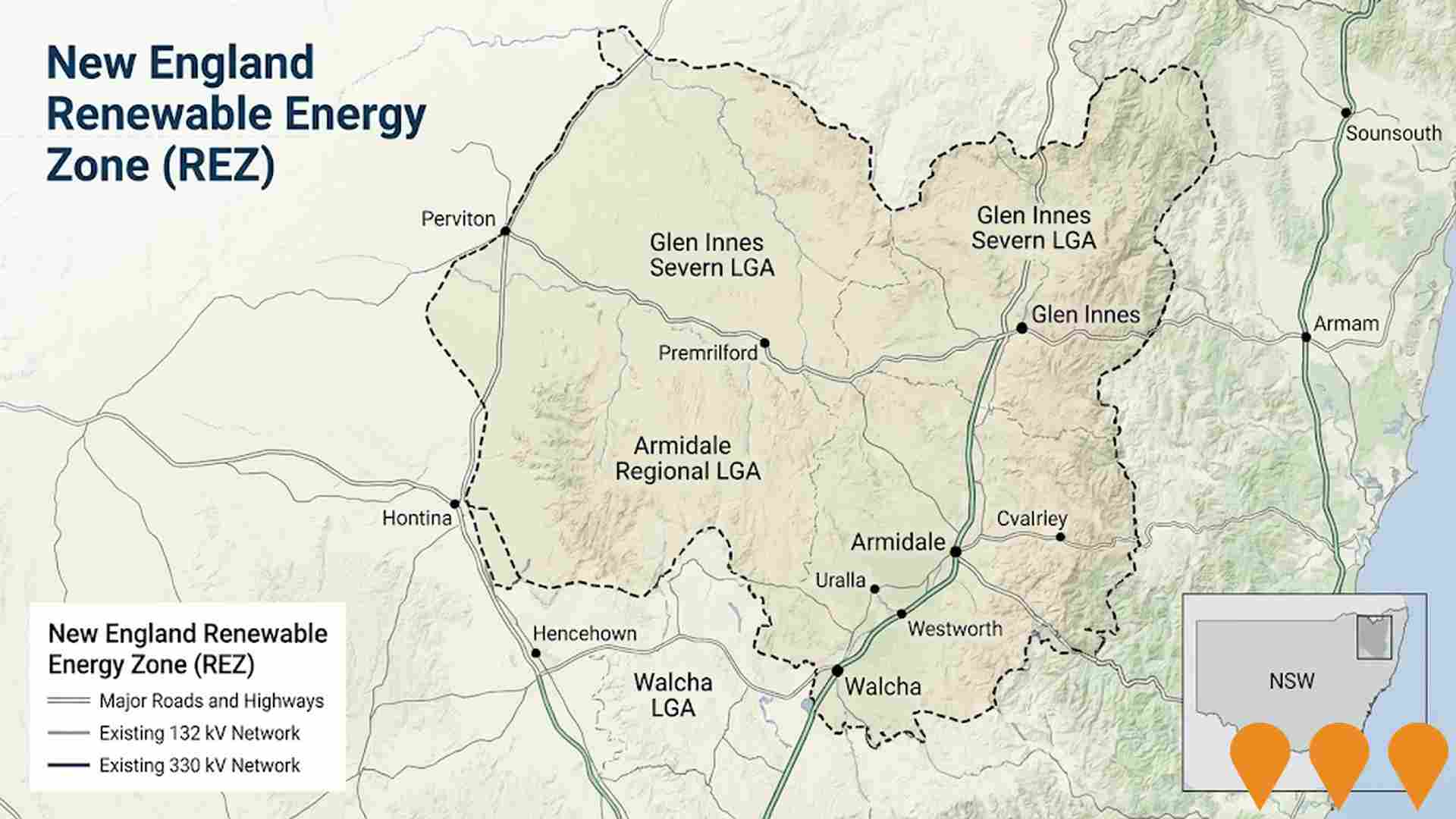
New Residential Areas Structure Plans
Council has endorsed the Structure Plans to provide an overall framework for three new residential growth areas in Inverell. The plans guide sustainable urban expansion, ensuring orderly and efficient development for road linkages, stormwater drainage, open space, and services provision. The project aims to accommodate population growth while minimising impacts on natural attributes and is supported by NSW Government fast-track funding for detailed drainage assessment and plans.

Inverell Hospital Redevelopment
NSW Health Infrastructure delivered a major upgrade of Inverell Health Service, including a new acute services hospital (Stage 1A) and refurbishment of the existing building to relocate community health services (Stage 1B). The project modernised facilities and expanded key services such as renal dialysis, day surgery, emergency, maternity, imaging and inpatient care.
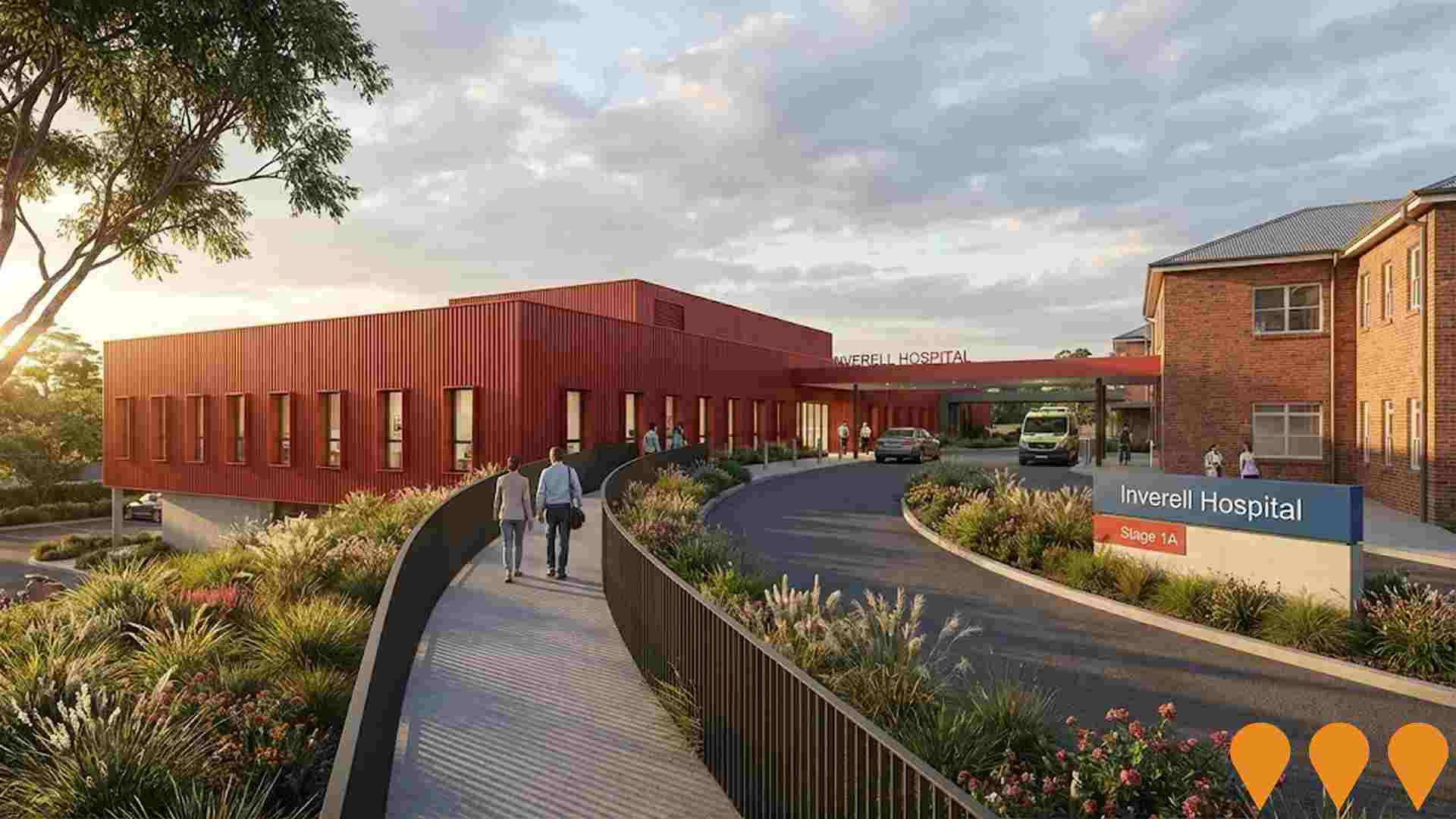
Inverell Town Centre Renewal Plan
Comprehensive, multi-staged renewal of Inverell's town centre, adopted by Council in 2014. Key works include streetscape improvements, enhanced pedestrian areas, public art installations, and replacement of old street trees with new species (Pin Oaks and Chanticleer Pears) to create an innovative at-grade centre median. Stage 1 (Otho Street) was completed in 2018. Stage 2 (Byron Street) was completed in 2020. The project is currently in the planning/funding stage for future works, referred to as TCRP Stage 3, for which over $517,000 in surplus funds from the Aquatic Centre Redevelopment were allocated in late 2025.
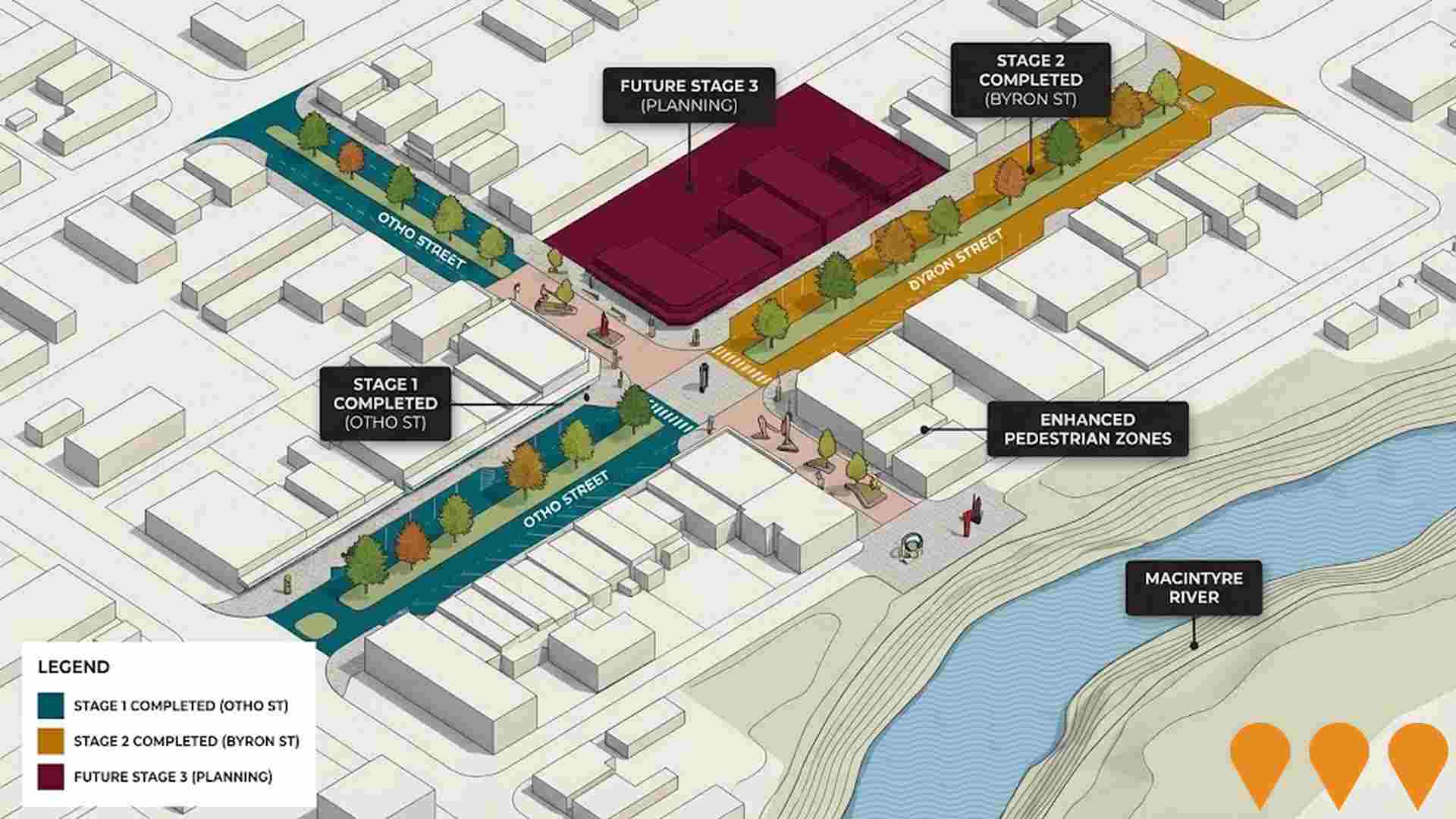
New England REZ Transmission Project
Critical transmission infrastructure for the New England Renewable Energy Zone (REZ) in NSW, including new 500 kV and 330 kV lines, energy hubs and enabling works to connect REZ generation to the state grid in the Upper Hunter/Hunter Valley. The project is progressing environmental studies and route refinement, with a scoping report lodged and field investigations ongoing. EnergyCo has commenced procurement for a network operator; EIS preparation continues with public exhibition targeted during 2025.
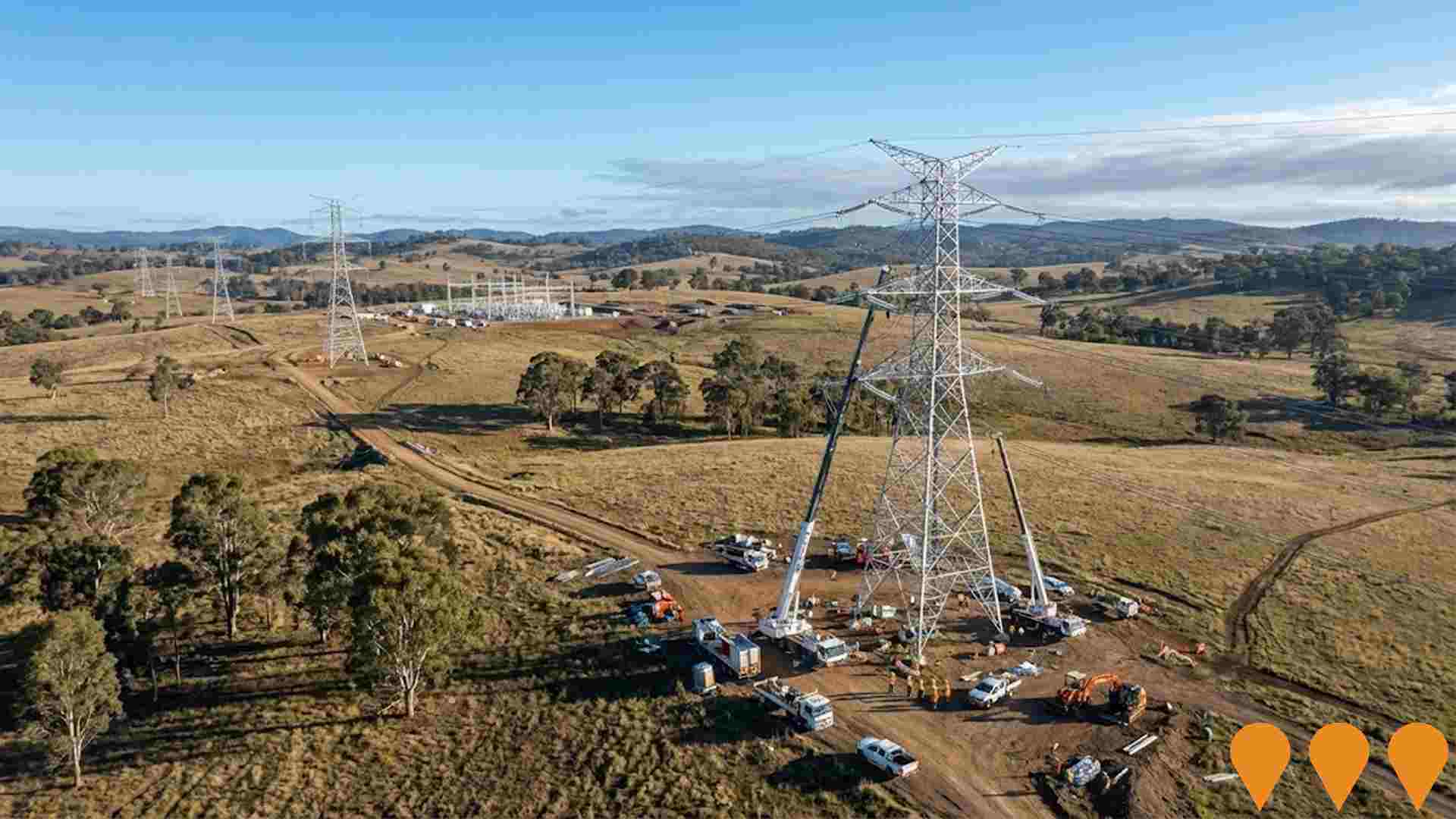
Gwydir Highway Improvements, Inverell Town Centre
Planning study for improvements to the Gwydir Highway through Inverell including intersection upgrades, pedestrian crossings, and traffic flow enhancements. The project aims to improve safety and reduce traffic congestion in the town centre. Transport for NSW manages the Gwydir Highway in Inverell, with local input from Inverell Shire Council for project selection and maintenance. The highway through Inverell is a major peak traffic area.

Inverell Aquatic Centre Redevelopment
A complete replacement of the 70-year-old memorial swimming pool with a state-of-the-art $25 million aquatic centre featuring an 8-lane 50m outdoor/indoor pool, 20m warm water program pool with moveable floor, indoor splash park, toddlers pool, cafe, and comprehensive aquatic programs. The facility achieved World Aquatics (FINA) accreditation and opened in February 2025.
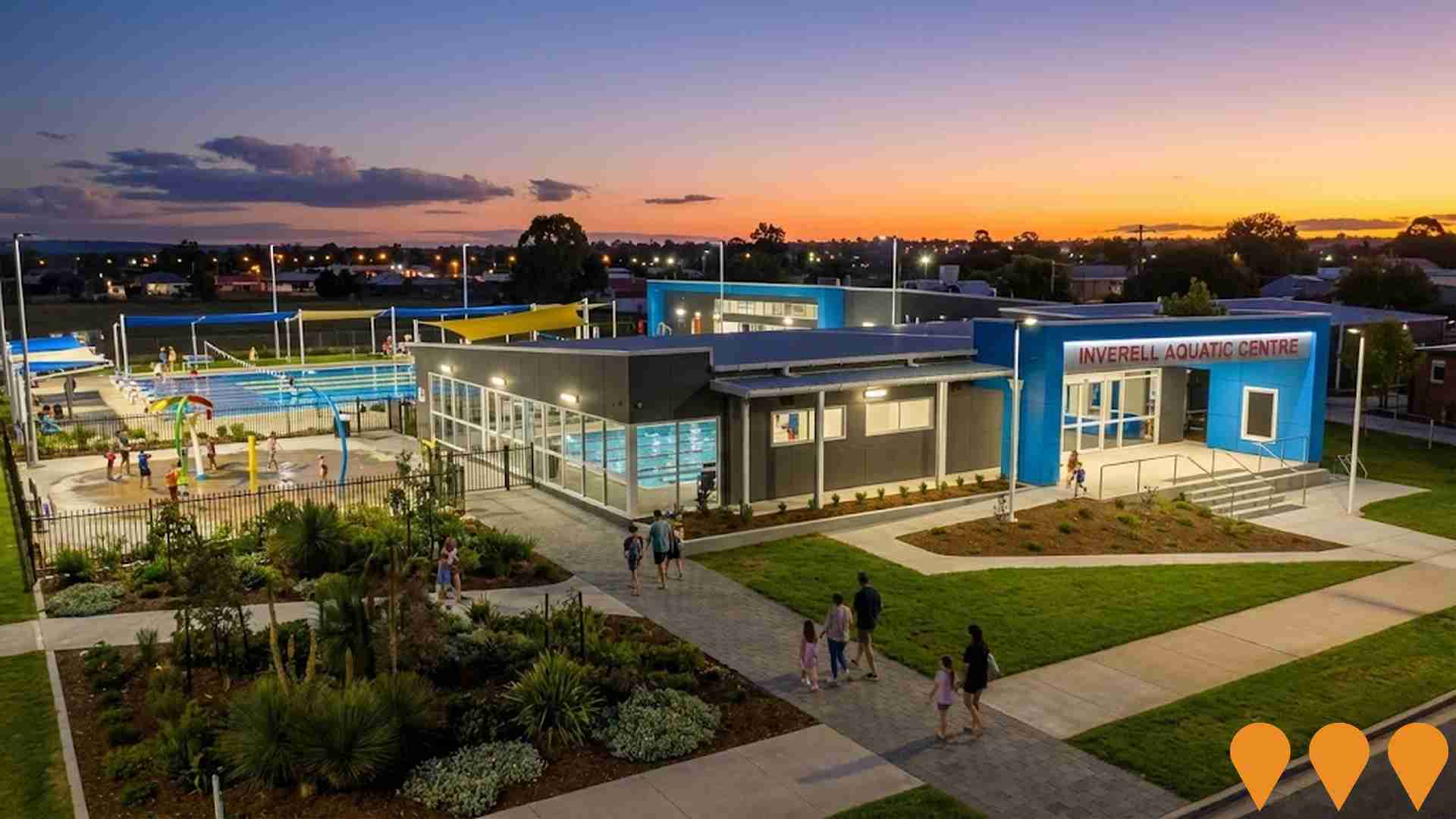
Bunnings Warehouse Inverell
Development of a new Bunnings Warehouse store with a total floor area of 8,497 square metres, featuring a main warehouse retail area (3,770 square metres), outdoor nursery (621 square metres), timber trade sales area (1,697 square metres), and other specialized zones. The project includes sustainability features such as 1,400 square metres of solar panels, rainwater capture tanks for irrigation and toilet reuse, bio-retention areas for site runoff management, and 198 parking spaces. Expected to create 90 jobs, representing an increase of 40 jobs compared to the existing Bunnings location.
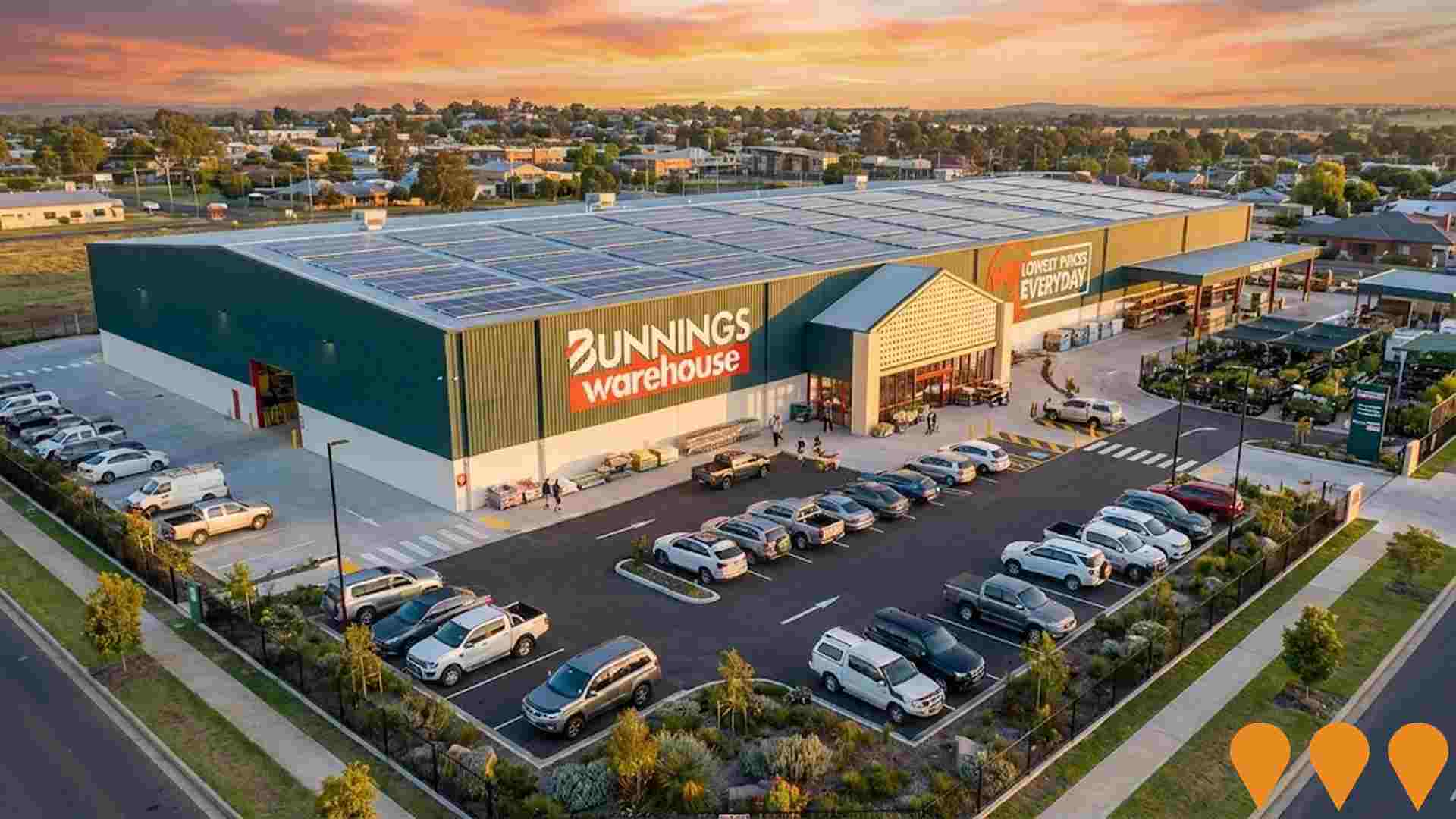
Employment
Employment conditions in Inverell demonstrate strong performance, ranking among the top 35% of areas assessed nationally
Inverell has a balanced workforce with white and blue collar jobs. The unemployment rate is 2.5%, with an estimated employment growth of 4.2% over the past year.
As of June 2025, there are 6,255 residents employed with an unemployment rate of 1.1% below Rest of NSW's rate of 3.7%. Workforce participation is lower at 52.7%, compared to Rest of NSW's 56.4%. Key industries include health care & social assistance, manufacturing, and retail trade. Manufacturing employment is particularly high, with a share of 2.4 times the regional level.
However, construction employs only 7.6% of local workers, below Rest of NSW's 9.7%. Many residents commute elsewhere for work. Over the past year, employment increased by 4.2%, while labour force grew by 3.3%, reducing unemployment by 0.8 percentage points. This contrasts with Rest of NSW where employment contracted by 0.1% and unemployment rose by 0.4 percentage points. Jobs and Skills Australia's national employment forecasts from May 2025 suggest potential future demand in Inverell. Applying these projections to Inverell's employment mix indicates local growth of approximately 5.7% over five years and 12.6% over ten years.
Frequently Asked Questions - Employment
Income
The area's income levels rank in the lower 15% nationally based on AreaSearch comparative data
Inverell's median income among taxpayers was $45,263 in financial year 2022. The average income stood at $52,563 during the same period. For comparison, Rest of NSW had a median income of $49,459 and an average income of $62,998. By September 2025, estimates suggest Inverell's median income will be approximately $50,971 and the average income will be around $59,191, based on a Wage Price Index growth of 12.61% since financial year 2022. According to the 2021 Census, household incomes in Inverell fell between the 12th and 22nd percentiles nationally. Income analysis showed that 28.3% of residents (3,496 people) earned within the $1,500 - 2,999 bracket, aligning with the regional trend where this cohort also represented 29.9%. After accounting for housing costs, 85.2% of income remained in Inverell, which ranked at the 15th percentile nationally.
Frequently Asked Questions - Income
Housing
Inverell is characterized by a predominantly suburban housing profile, with a higher proportion of rental properties than the broader region
Inverell's dwelling structure, as per the latest Census, comprised 87.8% houses and 12.1% other dwellings (semi-detached, apartments, 'other' dwellings). This compares to Non-Metro NSW's 93.0% houses and 6.9% other dwellings. Home ownership in Inverell stood at 37.0%, with the rest being mortgaged (29.5%) or rented (33.5%). The median monthly mortgage repayment was $1,250, above Non-Metro NSW's average of $1,100. Median weekly rent in Inverell was $270, compared to Non-Metro NSW's $240. Nationally, Inverell's mortgage repayments were lower at $1,250 versus Australia's average of $1,863, and rents were substantially below the national figure of $375.
Frequently Asked Questions - Housing
Household Composition
Inverell features high concentrations of lone person households, with a fairly typical median household size
Family households account for 66.5% of all households, including 22.4% that are couples with children, 29.0% that are couples without children, and 13.9% that are single parent families. Non-family households make up the remaining 33.5%, with lone person households at 30.7% and group households comprising 2.9% of the total. The median household size is 2.3 people, which matches the average for the Rest of NSW.
Frequently Asked Questions - Households
Local Schools & Education
Inverell faces educational challenges, with performance metrics placing it in the bottom quartile of areas assessed nationally
The area's university qualification rate is 13.5%, significantly lower than the NSW average of 32.2%. This presents both a challenge and an opportunity for targeted educational initiatives. Bachelor degrees are most common at 10.3%, followed by postgraduate qualifications (1.6%) and graduate diplomas (1.6%). Trade and technical skills are prominent, with 40.8% of residents aged 15+ holding vocational credentials - advanced diplomas (8.4%) and certificates (32.4%).
Educational participation is high at 29.8%, including primary education (12.2%), secondary education (8.9%), and tertiary education (1.9%). Six schools operate in Inverell, educating approximately 2,520 students. The educational mix includes three primary, two secondary, and one K-12 school. Inverell functions as an education hub with 20.4 school places per 100 residents, significantly above the regional average of 13.2, attracting students from surrounding communities. Note: where schools show 'n/a' for enrolments please refer to parent campus.
Frequently Asked Questions - Education
Schools Detail
Nearby Services & Amenities
Transport
Transport servicing is very low compared to other areas nationally based on assessment of service frequency, route connectivity and accessibility
Inverell has 35 active public transport stops, all of which are bus stops. These stops are served by 12 different routes that together offer 112 weekly passenger trips. The accessibility of these services is rated as good, with residents typically living just 336 meters from the nearest stop.
On average, there are 16 trips per day across all routes, which works out to about 3 weekly trips per individual stop.
Frequently Asked Questions - Transport
Transport Stops Detail
Health
Health performance in Inverell is well below average with prevalence of common health conditions notable across both younger and older age cohorts
Inverell faces significant health challenges, with high prevalence of common conditions across both younger and older age groups. Private health cover is low at approximately 47% (around 5,769 people), compared to the national average of 55.3%.
The most prevalent medical conditions are arthritis (10.4%) and asthma (9.0%). Notably, 63.6% of residents report no medical ailments, slightly higher than Rest of NSW's 61.0%. Inverell has a lower proportion of seniors aged 65 and over at 22.6% (2,794 people), compared to the Rest of NSW's 27.4%. Despite this, health outcomes among seniors present challenges but perform better than the general population in health metrics.
Frequently Asked Questions - Health
Cultural Diversity
Inverell is considerably less culturally diverse than average when assessed alongside AreaSearch's national rankings for language and cultural background related metrics
Inverell's cultural diversity was below average, with 88.1% of its population being citizens, 91.9% born in Australia, and 94.5% speaking English only at home. The predominant religion was Christianity, comprising 63.9% of Inverell's population, compared to 64.8% across the Rest of NSW. In terms of ancestry, the top three groups were Australian (33.8%), English (31.0%), and Australian Aboriginal (7.9%).
Notably, Filipino representation was higher at 0.9%, compared to the regional average of 0.4%. German representation was also notable at 3.1% (vs 3.9%) and Samoan representation was similar at 0.1%.
Frequently Asked Questions - Diversity
Age
Inverell's median age exceeds the national pattern
Inverell's median age is 41 years, lower than Rest of NSW's average of 43 but higher than Australia's national average of 38 years. The 15-24 age group constitutes 12.6% of Inverell's population, compared to the Rest of NSW figure. However, the 55-64 cohort makes up only 11.4%. According to data from the 2021 Census, the percentage of Inverell residents aged 15-24 has increased from 11.7% to 12.6%, while the proportion of those aged 5-14 has decreased from 13.7% to 12.7%. By 2041, demographic modeling indicates significant changes in Inverell's age profile. The 25-34 cohort is projected to grow by 17%, adding 250 residents to reach a total of 1,761. Conversely, population declines are forecast for the 5-14 and 15-24 age groups.
